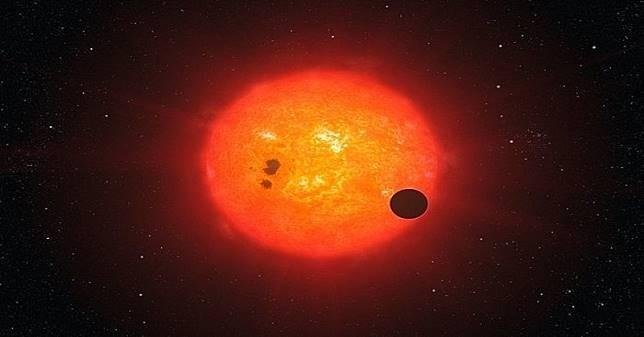
Researchers at the European Southern Observatory (ESO) have detected exoplanets (planets outside the Solar System) with titanium dioxide in the atmosphere. The planet, called WASP-19b, is part of the WASP-19 star system that is about 1000 light years from Earth.
Observations made by ESO Very Large Telescope (VLT), also offer a unique look in the WASP-19b atmospheric composition, including pressure and temperature arrangement. According to a report from Futurism, WASP-19b is a planet classified as "Hot Jupiter".
Despite its size as large as Jupiter, the planet has only an orbit in 19 days because it is so close to its parent star. Its proximity to the star makes it a really hot planet. According to reports, the planet's atmospheric temperature even reaches approximately 2,000 Celsius.
According to the report, researchers are able to detect titanium oxide by studying the light that penetrates the planet's atmosphere. Rarely seen on Earth, titanium oxide is usually found in the atmosphere of cool stars. The report shows that the planet's hot atmospheres such as WASP-19b, titanium oxide absorb heat and do not let the heat enter.
Interestingly, if there is enough titanium oxide in the atmosphere, the planet will see a thermal inversion that is a drop of temperature at higher atmospheric altitudes. The scientists also found that in addition to titanium oxide, the WASP-19b atmosphere contains sodium and water. The findings in WASP-19b's atmosphere came after a year of scientists collecting data and comparing observations.
"Detecting such molecules, however, is not simple. We not only need data with exceptional quality, but we also need to do sophisticated analysis. We use an algorithm that explores millions of spectra covering various chemical compositions, temperatures, and clouds or fogs in order for us to draw conclusions, "explains Elyar Sedaghati, an ESO student who worked on the project.
The same method is used to study the composition and composition of other planets. In addition, this method is used to detect metals and other compounds. This is one way to develop a better model of the exoplanet atmosphere. The report says that in July 2017, astronomers have identified more than 3,500 exoplanets where there are only about 300 Earth-like planets.
This content got low rating by people.
NASA : The Hottest Exoplanet Temperature Reaches 2,000 Degrees Celsius
3 Comments
